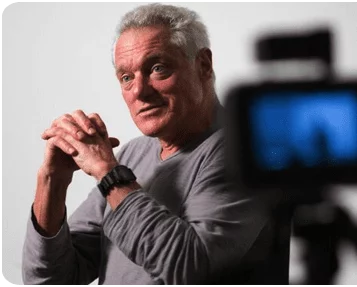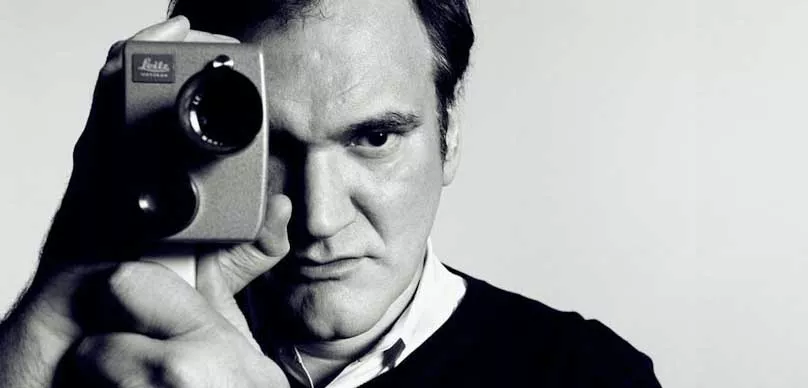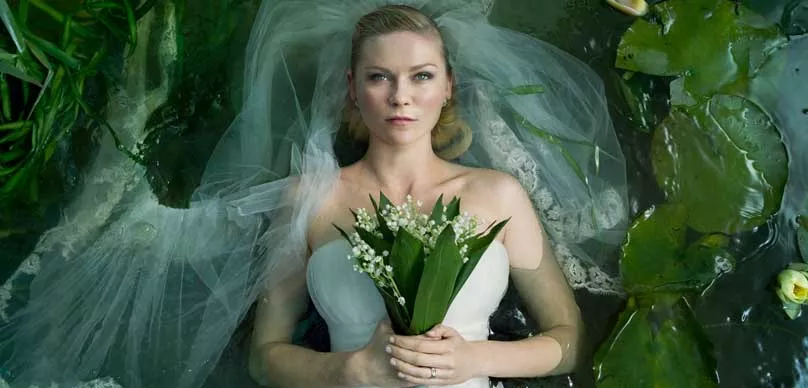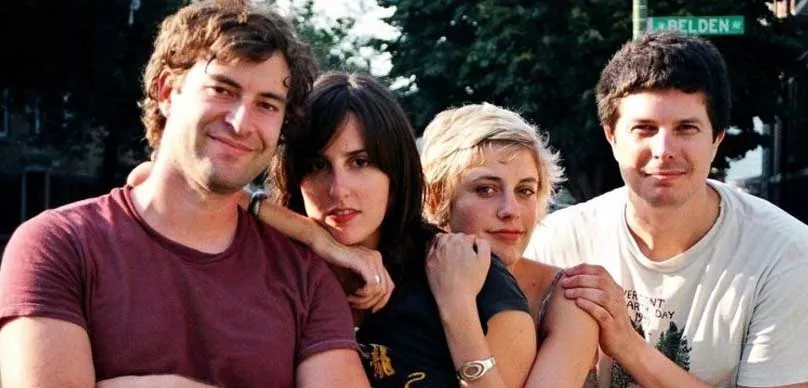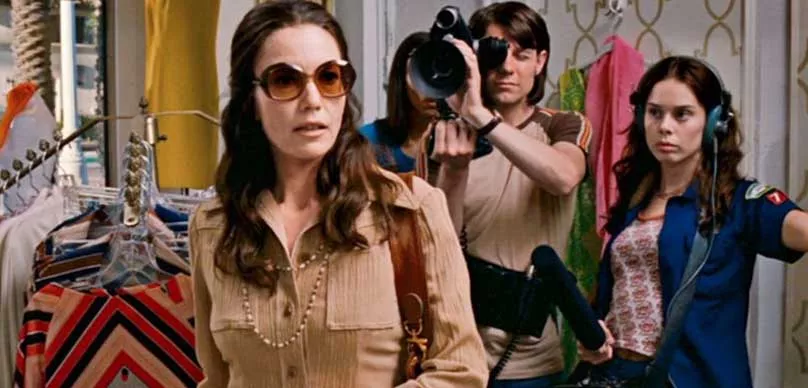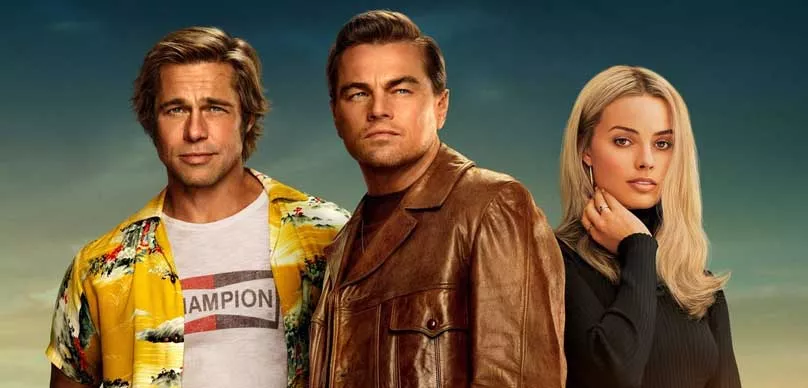The 4th film by Quentin Tarantino (as it reads in the film’s advertising copy), KILL BILL: VOLUME 1, was released during an odd time in my cinematic development. The year was 2003, and I had just entered my senior year of high school.
By that time, I was of age to see R-rated films in theatres without any kind of hassle or sneaky spy shit—but my friends were not. And that is how on a cold winter night in Portland, my younger brother and best friend were stuck in another auditorium watching a stale biopic on the religious reformer Martin Luther, while I was alone in another auditorium gleefully taking in the literal bloodbath that was KILL BILL: VOLUME 1.
Read Quentin’s Screenplay for This Film Here
I had heard of Tarantino prior to this, by virtue of being a casual participant in cinematic pop culture. However, KILL BILL: VOLUME 1 was the first Tarantino film I ever saw, and I was riveted for its duration. After leaving the theatre, I immediately (okay, maybe it was a week or two later) went out and bought PULP FICTION (1994) and RESERVOIR DOGS(1992) on DVD so I could check out his other work—the first time I had ever done so as for a given director. I hadn’t yet gone to film school, so I had yet to learn about Andrew Sarris’ auteur theory, but I intuitively understood the sentiment because of Tarantino.
Tarantino’s grand return to cinema after 1997’s JACKIE BROWN, KILL BILL: VOLUME 1 was almost ten years in the making. What began as excited chattering and brainstorming between Tarantino and actress Uma Thurman during the production of PULP FICTIONslowly grew over the years to become a gargantuan celebration of cinema’s various forms and a legitimate pop cultural phenomenon unto itself. KILL BILL: VOLUME 2 (2004) was released only six months later, but Tarantino had initially conceived the idea as one epic revenge tale spanning vast swaths of time and space. Rather indulgently, Tarantino added new scenes to the script as he shot—a testament to the unfettered, unadulterated giddiness with which he approached the project—only to find himself in the editing room with a film that ran a (bladder-annihilating) four hours. His producing partners—Lawrence Bender, Bob Weinstein, and Harvey Weinstein—successfully argued for the film to get released in two parts. Hence, VOLUME 1.
The KILL BILL saga tells the blood-soaked tale of The Bride (Thurman), who lost her baby and four years of her life when she was attacked and left for dead on her wedding day by her old boss and lover, Bill (David Carradine) and his gang of elite killers, the Deadly Viper Assassination Squad. When she comes out of her coma, she immediately sets to work planning the execution of each and every person involved. KILL BILL: VOLUME 1 sets up the Bride’s quest, travelling as far as Japan as she pursues the first two ex-Viper Squad names on her Death List: Pasadena homemaker Vernita Green (Vivica A. Fox) and Yakuza boss O-Ren Ishii (Lucy Liu). Along the way, she coaxes the legendary Hattori Hanzo (Sonny Chiba) into constructing a new samurai sword for her, and encounters a masked Yakuza gang called the Crazy 88’s.
Tarantino’s cast is first-rate, turning in performances that are at once both over-the-top and sincere. This is Thurman’s show, through and through, and she soaks up every ounce of energy in the scene, channeling it into an aggressive performance. With revenge tales, it’s easy for the protagonist to become so focused in their vendetta that they become one-note and cease being multi-dimensional. Fortunately, Thurman imbues The Bride character with unfathomable complexity and grit. She courageously stares down every challenge and continually summons up vast wells of strength to overcome them. It’s one of Thurman’s most high-profile performances, and easily one of her best.
I’ll elaborate more on Carradine’s portrayal of Bill in my analysis of VOLUME 2, as he is only heard, and never seen during the entirety of VOLUME 1. However, his seasoned growl of a voice does the heavy lifting for us, telling us everything we need to know about the chief target of The Bride’s obsessive quest. Instead, the chief antagonist of VOLUME 1 is O-Ren Ishii, played by Lucy Liu in the role she was born to play. O-Ren is a highly-skilled assassin and can match the Bride in sword combat blow for blow, so it was crucial that whoever plays the role can convey the appropriate amount of fierceness and conviction. Liu pulls this off effortlessly, channeling her years of experience in other action films into a surprisingly subversive performance. Of all the members of the Deadly Viper Assassination Squad, she is given the most amount of backstory, which paints her as the dark mirror image of the Bride and the strongest possible antagonist for her to face in the first installment.
Tarantino’s supporting cast is stuffed with scene-stealing turns, their interactions against the relatively blank canvas of The Bride’s personality serving to highlight their unique character traits. Vivica A. Fox plays the most against type as the fierce, sassy Vernita Green, who—in a brilliant manipulation on Tarantino’s part—finds herself fighting for her life against the Bride while simultaneously trying to hide the violence from her young daughter.
Julie Dreyfus is the most conventionally-feminine presence in the film, as O-ren’s half-French, half-Japanese lawyer, and protégé, Sofie Fatale. Chiaki Kuriyama plays Gogo Yubari, O-Ren’s teenage bodyguard with a mean psychotic streak and the appearance of a giggling Japanese schoolgirl. Sonny Chiba is a welcome comedic presence as Hattori Hanzo, a wizened sage and retired swordmaker who is called out of retirement when he learns the intended target of The Bride’s vendetta.
And finally, veteran character actor Michael Parks plays Earl McGraw, a Texas cop and gruff, tobacco-spitting’ sonabitch. This is Parks’ first collaboration with Tarantino, and he would continue working with Tarantino in bit roles throughout the mid-2000s. He’d even go on to reprise his role as the fan-favorite McGraw character in both sections of the joint-Tarantino/Robert Rodriguez directorial effort GRINDHOUSE (2007).
KILL BILL: VOLUME 1 is arguably one of the most dynamic and strikingly visual films ever made. The utmost care and passion went into the composition of every shot, and Tarantino’s love for the art form and its seminal works comes through in every frame. He enlists the services of cinematographer Robert Richardson for the first time, who gorgeously captures Tarantino’s wild vision and arresting 2.35:1 composition on Super 35mm film. Gone are the burnished Technicolor hues of Tarantino past; this film is slick, with brightly saturated colors and high-key, expressionistic lighting. Each scene references some form of cinema that Tarantino loves, whether it’s a kung-fu flick, a spaghetti western, a Blaxploitation film, or even a Brian DePalma shlock thriller. The umbrella term for Tarantino’s visual presentation here would be “grindhouse”, but he pulls inspiration from every corner of the film universe, mashing it together into a Frankenstein-ish form that’s astonishingly coherent.
Tarantino has always been a referential filmmaker, appropriating bits and pieces from his influences into a style that’s both his own and an homage to the works that came before it. KILL BILL VOLUME 1 is arguably the most nakedly referential film in Tarantino’s canon, adapting the look and style of each scene to the subgenre of film it is paying homage to. For instance, the use of split-screen and that unsettling “whistle” song during the sequence where the eye-patched assassin Elle Driver (Daryl Hannah disguised as a nurse) sneaks into a comatose Bride’s room to inject poison into her veins is a direct reference to both Mario Bava’s BLACK SUNDAY (1960) and Brian De Palma’s DRESSED TO KILL (1980). Both directors are commonly cited as huge influences on Tarantino, and he (along with the help of unsung hero, the late editor Sally Menke) manages to wordlessly reference both of them while creating something entirely his own. The KILL BILL saga is littered with mish-and-mash sequences like these.
For me personally, the most jarringly original thing about the film is Tarantino’s inclusion of an animated sequence midway through the film. Another reference to the director’s pulp inspirations, the sequence is rendered in the style of Japanese anime, depicting O-ren Ishii’s traumatic witnessing of the murder of her parents, and her eventual revenge on the man responsible (which makes her a kindred spirit with The Bride). Her skill with murder leads her to becoming one of the best female assassins in the field, and her rise is chronicled in stylish animated fashion. When I first saw the film and this scene began unspooling, my jaw dropped. I specifically remember thinking to myself, “wait, we can do that?!”—I was literally shocked that someone would have the audacity to even include such a bracingly different animated style into a live-action film, much less pull it off with the effortless grace that Tarantino does here.
This inspired blend continues into the film’s centerpiece: The Bride’s showdown with the Crazy 88’s at the House of Blue Leaves. Japanese samurai and Yakuza crime films are the chief stylistic influence on VOLUME 1, reaching an apex in this brutal, bloody showdown. The extended sequence is undoubtedly one of the best pieces of work that Tarantino has ever done, containing little bits and pieces of his best techniques to delirious, expressionistic effect. There are four key bits to this scene that illustrate Tarantino’s impeccably thought-through approach to the film.
The first is the beginning, with O-Ren and her Crazy 88 entourage entering the House of Blue Leaves. Tarantino frames the action head-on in wide shot, with the actors walking towards the camera and breaking the fourth wall by looking directly into it. Tarantino then punches in to closer shots, revealing the performers to be walking in slow-motion. All the while, he uses a Hotei Tomaya song, “Battle Without Honor or Humanity”, which has since become the de facto KILL BILL theme song. Granted, this scene has been endlessly parodied nearly shot for shot (TEAM AMERICA: WORLD POLICE did it best in 2004) in the years since we first laid eyes on it. However, Tarantino of all people knows that imitation is the best form of flattery, and the fact that this specific pairing of motion, composition and song choice has entered into our collective cinematic consciousness as the visual shorthand for “badasses on a mission” speaks to Tarantino’s intuitive connection to archetypal scenarios.
Shortly after The Bride arrives at the club, Tarantino takes us on an expansive, bird’s eye-view tour of the House of Blue Leaves. Over the course of a single shot, we zoom across the rafters looking down at the action, descend to eye-level and follow the Bride through the hallway into the bathroom, and pull back out again for a wide shot of the scene. Whereas Tarantino usually opts for subtle tracking techniques that hide how complicated they actually are, here he is an unabashed showman. It’s almost a brazen “look what I can do” kind of statement, an elegant dance between camera and director to the accompaniment of Japanese surf rock, courtesy of real-life rock band The 5,6,78’s. (Their iconic “Woo-Hoo” song would be driven into the ground by a particularly aggressive and annoying series of Vonage commercials a few years later). This kind of show-boaty tracking shot draws its inspiration from a cadre of influences like Martin Scorsese, Robert Altman, and Tarantino contemporary Paul Thomas Anderson.
The actual fight itself is somewhat of a tour de force for Tarantino, who up to this point had never actually filmed anything as openly “action film-y” as this before. It helps that his location was a specially built set in China’s venerable Shaw Studios, where many of Tarantino’s favorite kung-fu films had been shot in the past (he even references the studio by including a vintage “Filmed In Shaw Scope” card at the beginning of the film). This sequence alone has the highest body count within Tarantino’s entire canon, and is one of the most viscerally violent scenes ever put to film. It’s so violent, in fact, that Tarantino switches from color to black and white for a large portion of it to tone down the sight of the literal ocean of blood he sheds. Despite its cartoonish brutality, Tarantino helms the sequence with such an artful eye that it becomes more expressionistic than violent. This is further evidenced when the sequence switches back to color, and The Bride and her adversaries are silhouetted against a bright blue grid (one of my favorite images in film, ever).
The final beat of the House of Blue Leaves setpiece is the final showdown between The Bride and O-Ren, which takes place in a gorgeously tranquil, moonlit & snow-covered garden. The transition from blood-soaked nightclub to the peaceful, quiet and beautiful scene lying just outside is breathtaking. Tarantino is able to harness the full beauty of this sequence, crafting some of the most aesthetically gorgeous compositions of his career. The final battle between the two expert samurai swords-women is paired with the unexpected choice of a flamenco salsa music track. It works surprisingly well, and is a perfect illustration of the grindhouse/arthouse, East-West dichotomy Tarantino incorporated into his story and themes. Everything that Tarantino is trying to aesthetically express with his KILL BILL saga is effortlessly distilled down to its essence in this single scene.
David Wasco returns as Production Designer for the film, this time collaborating with Yohei Taneda in creating a series of vibrant set-pieces. The House of Blue Leaves is an incredible set, as is the whimsical miniature model of Tokyo that The Bride watches roll by as her plane descends. The model itself doesn’t look photo-realistic, but its sublime, old-school charm gels the highly expressionistic vision Tarantino has cultivated.
Tarantino has always been known for his eclectic, tastemaking soundtracks. KILL BILL VOLUME 1 ups the bar considerably, drawing in a veritable potpourri of influences from every corner of the music world. The aforementioned “Battle Without Honor or Humanity” is undeniably the highest-profile piece, achieving a level of instant recognition and fame on par with Tarantino’s use of “Miserlou” in PULP FICTION. VOLUME 1’s disparate musical styles bear no resemblance to each other on their face, but Tarantino combines them in a way that creates a unique character for the film. Nancy Sinatra, Charlie Parker, Ennio Morricone, and Zamfir the flutist all contribute to a mish-mash musical palette, weaving into one another in a rich tapestry. In a first for Tarantino, original score elements have been commissioned by RZA of the Wu-Tang Clan. His work doesn’t particularly stand out against Tarantino’s needle drops, but it adds another layer of chop-socky/funky sound to an already-impressive landscape.
I mentioned earlier how KILL BILL VOLUME 1 was the first Tarantino film I ever saw, and for the uninitiated, it’s the clearest example of his directorial style. Every one of his signature flourishes is in here and amplified to an almost cartoonish degree. Creative dialogue and profanity is blended in with oddly formal language, which Tarantino cites as a callback to the formalist dialogue in the old samurai films that influenced his script. Events are presented in non-chronological order, separated by inter-titles that divide the story up into book-like “chapters”. The use of the color yellow in his on-screen text is abundant (although he seems to switch between colors and fonts at will, and with reckless abandon). There’s a plethora of pop culture references, even at the beginning when Tarantino flashes the “revenge is a dish best served cold” quote from STAR TREK. Non-diagetic music stops abruptly on a hard cut. Lots of close-ups of feet feed Tarantino’s personal fetish. Lots of compositions featuring characters in profile during build-ups to showdowns. A general grindhouse vibe helped by the inclusion of rack zooms and vintage sound effects. The black suit/white shirt combo reserved for Tarantino’s professional criminals is represented in the wardrobe of the Crazy 88’s. Even the infamous Tarantino trunk POV shot is included here, manifested in the form of the Bride delivering a cryptic threat to Bill through Sofie Fatale, who lies bound and injured in the trunk. If one ever needs a crash course on what separates Tarantino from any other director, they only need look at KILL BILL: VOLUME 1.
Tarantino often cites Sergio Leone’s THE GOOD, THE BAD, AND THE UGLY (1966) as a huge influence on his style. The spaghetti western homages are liberally sprinkled through the KILL BILL saga, but one thing in particular stands out to me. The Sergio Leone DOLLARS TRILOGY famously featured Clint Eastwood as The Man With No Name. The Bride has a similar unidentified persona, albeit she experiences a much wider range of emotions than her Leone counterpart. She does happen to have a real name, but whenever the characters speak it, Tarantino physically bleeps it out. It took me a few instances to catch on when I first saw the film, but it’s an amusing little conceit that pays off well in VOLUME 2, in addition to being a nice callback to one of Tarantino’s chief influences.
In a previous post, I mentioned how Tarantino’s characters inhabit a self-contained universe of the director’s own design. Some fans have taken his filmography as a whole and placed them along one timeline in an alternate reality branching off from ours sometime around the end of WW2. I’m paraphrasing a loose collection of separate articles written by other people, but the general idea is that the events portrayed in INGLOURIOUS BASTERDS (2009)—the murder of Adolf Hitler in a movie theatre—began a different reality in which movies play a much larger part in society, and society as a whole has become more attuned to pop culture and exaggerated in violence, profanity and sex. The KILL BILL films don’t fit into the timeline itself, but are rather a manifestation of what kind of movie that this exaggerated society would produce—in other words, a movie whose violent aspects would be cranked up to 11 for an audience already desensitized to violence as an everyday fact of life. When Vincent and Vic Vega go to the theatre together, they’d be seeing a movie much like KILL BILL.
KILL BILL: VOLUME 1 also begins what I like to refer to as the “Tex-Mex” phase of Tarantino’s career. It is with the KILL BILL films that he began working in earnest with good friend and fellow filmmaker Robert Rodriguez, who’s own distinctly Mexican/Texan aesthetic undoubtedly influenced Tarantino. During this period, from roughly 2003-2008, Tarantino’s work takes on a distinctly southwestern vibe removed from the SoCal Valley locales that defined his earlier work. A great bulk of KILL BILL VOLUMES 1 & 2 takes place in Texas, Mexico, and California. His next project with Rodriguez, 2007’sGRINDHOUSE, again takes place in Texas and utilizes a lot of the same imagery. During this time, Rodriguez and Tarantino were partners in crime, mimicking and riffing off each other in their own separate works until their directorial styles achieved a symbiosis in which it was hard to tell the two apart.
Tarantino’s distinct style played such a significant role in defining 1990’s pop culture that some rightly wondered after the release of 1997’s JACKIE BROWN whether Tarantino was fated to be a relic of that decade. He stayed off the screen long enough that it became a very serious question. The world of cinema had already changed so much since the turn of the new millennium; would Tarantino still have a place at the table when he came back? Fortunately, the extended hiatus proved refreshing for Tarantino, and he returned to the cinema world with the same fury and intensity that had propelled PULP FICTION a decade earlier. But don’t call it a comeback—the success of KILL BILL VOLUME 1 proved that Tarantino could adapt with the times while still doing what he does best: crafting a killer film.
Kill Bill Volume 2
Director Quentin Tarantino returned to cinemas with a vengeance with his 2003 hit, KILL BILL: VOLUME 1. A scant six months later, he capitalized on the film’s shocking cliffhanger ending by releasing the finale to his blood-soaked saga, KILL BILL VOLUME 2. Originally conceived as one epic film, an initial 4-hour running time prompted Tarantino to split the film in two—an inspired decision, considering that the second half of KILL BILL is radically different in tone and style than the first.
Audiences with expectations of another high-octane blood bath were shocked to find themselves watching a different kind of film entirely—a slower, more somber movie that put a priority on dialogue over action. The Bride must have killed upwards of forty people in VOLUME 1, but her body count in VOLUME 2 can be tallied on one hand. Audiences were understandably disappointed by what they deemed a lackluster conclusion to a brilliant set-up, but they fail to see a richer, more personal film that eloquently carries the Bride’s bloody quest to a satisfying, emotionally resonant close.
Shifting the action from exotic Japan, Tarantino brings us back to the western deserts of California and Mexico as The Bride closes in on the last few names remaining on her Death List: burnt-out strip club bouncer Budd (Michael Madsen), treacherous and one-eyed assassin Elle Driver (Daryl Hannah), and the big man himself (David Carradine). Along the way, we find out more about the circumstances of Bill’s original attack on our hero’s wedding party that began this whole story. Most importantly, we learn that The Bride’s unborn baby, thought lost in the wake of the wedding rehearsal massacre, is alive and well— a fact that complicates The Bride’s desire to kill Bill, given that he’s the father.
Uma Thurman continues her scorched-earth performance as the Bride, with VOLUME 2requiring her to convey startlingly real vulnerability while still retaining almost-biblical levels of courage. Her evolution from cold-blooded killer to fierce lioness protecting her cub is the film’s heart and soul, creating a surprising dramatic resonance amidst all the bloodshed. And along the way, we find out her real name—Beatrix Kiddo. I’d say you can’t make that shit up, but Tarantino clearly did.
The late David Carradine is a revelation as the film’s eponymous target. Heard only in voice in VOLUME 1, Tarantino chooses to reveal his weathered visage in spectacularly anticlimactic fashion. Carradine plays the sadistic boss as a warmly paternal poet. It’s easy to see why The Bride once loved him; Bill is intelligent, cultured, and– despite his criminality– very fair. His actions in massacring The Bride’s entire bridal party, while undeniably cruel, come from a place of honor that supersedes his relationships. It’s the mark of a man with integrity and conviction—the kind of man you wouldn’t expect to be the chief antagonist.
Carradine, who featured in a variety of kung-fu films that Tarantino cites as huge influences, had largely fallen out of the public eye when he was cast as Bill. Much like John Travolta or Robert Forster before him, he became blessed by the Tarantino Effect, whereby aging character actors experience a career resurgence after working for the director. Unlike the others, this resurgence manifested itself in a general awareness and newfound respect to his long career, but didn’t really result in getting more high-profile work. It’s very possible that he might have, but sadly Carradine passed away in 2009 before he could really capitalize on it. His performance as Bill is probably the best career capstone and farewell anybody could ask for.
Michael Madsen– in his second performance for Tarantino after RESERVOIR DOGS (1992)–was barely alluded to in VOLUME 1, but VOLUME 2 allows us to experience his Budd character in all his burnt-out, redneck glory. Essentially a recluse living out of a trailer in the desert, Budd has forsaken the assassin lifestyle and brings in a meager salary as an underappreciated strip club bouncer. Madsen breathes palpable life into his performance, his withdrawn eyes channeling a fundamental regret and weariness. He relishes the opportunity to ham it up in a gross mullet and a beer belly, but he still hasn’t lost his dangerous, sadistic edge. Despite looking nothing like Carradine, Madsen makes us really believe that he is Bill’s brother.
Daryl Hannah continues her devious, eye-patched performance as Bill’s current beau and arguably the deadliest member of the Viper Assassination Squad, Elle Driver. She gets a fantastic, no-holds-barred fight sequence with The Bride in Budd’s cramped trailer, and she plays up her insidiousness to the requisite cartoonish degree. Hannah doesn’t seem to do much acting these days, but it’s easy to see why Tarantino wanted her in the film. Despite her playing someone far from her type, she embraces every challenge and really puts all of herself into the role.
Michael Parks also returns, albeit as a completely different character than the Texan cowboy cop he played in VOLUME 1. This time around, he’s completely unrecognizable as Esteban, an elderly Mexican pimp and father figure to Bill. I remember being absolutely shocked when I learned that it was Parks buried underneath some incredible makeup. He’s easily characterized as the Texas lawman archetype, but he has a startling range that further lends credence to my personal theory that character actors are the most legitimately talented kind of actors.
This is further illustrated by Tarantino’s recurring guest stars, who continue popping up in small roles and cameos in his films, regardless of how big of a name they are. Sid Haig, who appeared as a judge in JACKIE BROWN (1997) turns in another small cameo here as the bespectacled bartender of Budd’s nudie bar. Tarantino mainstay Samuel L. Jackson appears as Rufus, the blind piano player caught in the unfortunate crossfire of Bill’s wrath during the Bride’s wedding rehearsal. We don’t even see Jackson’s face in the film, so it says something about Tarantino in regards to the respect afforded to him by his actors that they’ll show up for what essentially amounts to a walk-on voice role despite being internationally-known stars.
Stylistically speaking, KILL BILL VOLUME 2 turned a lot of people off when it was released. After gleefully taking in the frenzied bloodbath of VOLUME 1, they were shocked to find that Tarantino had chosen to make the concluding entry so drastically different. Since both films were shot at the same time, VOLUME 2 retains many of the main visual conceits as VOLUME 1: Super 35mm film negative source, dramatic 2.35:1 anamorphic aspect ratio, a brightly-hued color scheme and book-like chapter designations to divide up big sequences. However, if VOLUME 1 represented the East with its Japanese stylings, than VOLUME 2 is full-on Sergio Leone West, placing the bulk of its action in dusty California, Texas, and Mexico.
Despite its drastic departure from VOLUME 1’s presentation, the structure of VOLUME 2reveals it to be very much of the same mind. The non-chronological order of sequences is retained, as are the stylized compositions that have come to characterize not only the series itself, but Tarantino’s aesthetic as a whole. Take, for instance, the sequence where The Bride trains with ancient martial arts master Pai Mei (Gordon Liu). One shot in particular shows The Bride and Pai Men practicing their kicks, silhouetted against an expressionistic red background. This mirrors, as well as contrasts, a similar shot in VOLUME 1, where the silhouettes of The Bride and her Crazy 88 adversaries are set up against a similarly-expressionistic blue background. This illustrates how each film is really half of a whole, with one thematic through-line running across both of them.
The music also takes a decidedly different tack than VOLUME 1, opting for a spaghetti western sound to reflect Tarantino’s arid and dusty images. Interestingly enough, the film isn’t as loaded with pre-recorded needle drops as its predecessor—which means that for the first time, Tarantino is making substantial use of original score, provided by fellow filmmaker and friend Robert Rodriguez. Rodriguez does a great job emulating Morricone’s sound, enough so that the difference between score and Tarantino’s well-placed Morricone source tracks is hard to discern. VOLUME 2’s ties to its predecessor are further solidified by the inclusion of a few Blaxploitation/funk tracks, but for the most part VOLUME 2 is very much its own beast.
Tarantino’s characters continue to be an exceedingly verbose lot, with filthy mouths to match their creative wits, a tendency for those of the female persuasion to not wear shoes, and an-almost meta awareness of pop/film culture. This is most easily seen in Bill’s climactic monologue where he espouses the theory that Superman’s alter ego of Clark Kent is really his critique on what he perceives to be a weak, ineffectual race of life forms.
Another moment is the film’s beginning, which seems to achieve multiple layers of meta in its presentation. In the sequence, Thurman is driving to kill Bill, and she’s talking directly to the camera. That’s one layer of meta, the 4th wall-breaking that Tarantino loves to do. Her dialogue is basically re-capping the events of VOLUME 1, but said in such a way as if she just came from the movie herself—she even references critic quotes from the trailer. Now that’s two layers of meta. Finally, no effort is made to conceal the old-school rear projector technique that throws up a moving background behind her as she speaks. At this point, I’ve lost track of how many layers of meta we’re dealing with here. The important thing is that it works.
There’s a lot of other stylistic conceits I could list here, like characters being shown in profile, long dialogue sequences building up to violent outbursts, professional criminals clad in variations on the black suit/white shirt aesthetic, long tracking shots, etc. Tarantino’s style is one of the most well-known in all of cinema—so much so that I feel like I’m insulting your intelligence by even writing it here. His style has been more or less established since day one, and each film builds on it according to the demands of the story.
Many are divided over which volume of KILL BILL is actually better. Personally, I find them so different that it’s hard to compare them. If I had to choose a favorite, however, it would be VOLUME 2. In my eyes, it is the stronger film because the substance, and not the style, is driving the plot forward. It’s one of the most subversive films Tarantino has ever made. A VOLUME 3 has been rumored for years, tentatively featuring the exploits of Vernita Green’s daughter as she seeks out the Bride for her own vengeance, but given how Tarantino regularly speculates but never follows through on sequels to his films (nothing ever did come of that Vega Brothers film, I highly doubt a VOLUME 3 would ever come to fruition.
I would be remiss to mention the cut that combines both films into a semblance of Tarantino’s original vision, titled KILL BILL: THE WHOLE BLOODY AFFAIR. Currently unavailable on home video, this rare print premiered at Cannes and has been shown in arthouse theatres across the country (most notably at Los Angeles’ New Beverly Cinema, which Tarantino just so happens to own). I’ve been curious to see this four-hour cut, which reportedly contains a longer animation sequence and restores the color to the Massacre at House of Blue Leaves sequence. It seems to me like THE WHOLE BLOODY AFFAIRwould be the superior version of either film, but who knows if I’ll ever get to make that conclusion.
KILL BILL VOLUME 2 finds Tarantino at the apex of his “Tex-Mex” phase, with his closest collaborator (outside of editor Sally Menke, of course) being Robert Rodriguez. The film is Tarantino’s own personal zeitgeist, where his tendency for homage and imitation reaches its zenith. The KILL BILL saga is the biggest thing he’s ever done, and he pulled it off with obscene style. Literally no other person could dream up what Tarantino did here, and the result is a piece of pop culture that helped to define the Aughts, just like PULP FICTION did for the ’90s.
Author Cameron Beyl is the creator of The Directors Series and an award-winning filmmaker of narrative features, shorts, and music videos. His work has screened at numerous film festivals and museums, in addition to being featured on tastemaking online media platforms like Vice Creators Project, Slate, Popular Mechanics, and Indiewire.
THE DIRECTORS SERIES is an educational collection of video and text essays by filmmaker Cameron Beyl exploring the works of contemporary and classic film directors.


